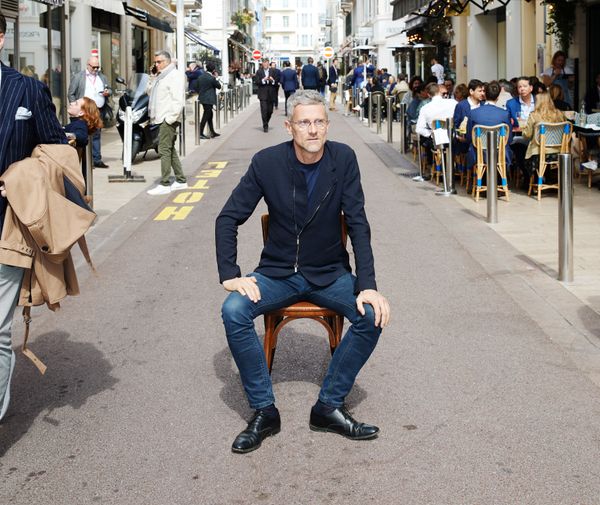Question 1: What technology or technologies are the focus of your research, teaching, and action?
For the past 20 years, our Senseable City Lab has been working at the intersection of the physical world and the digital world. Our specific technologies have changed over time, but three big categories are fixed: sensors to apprehend the physical world, actuators to affect it, and a lot of Big Data analysis and AI in the middle. As cell phones rose to prominence in the 2000s, we were among the first to use them to record the pulse of the city, from traffic patterns to social segregation, in real-time. After decades, we have only scratched the surface of what kind of insights this can yield. Just a few months ago, we published a paper showing how smartphone’s built-in accelerometers can detect structural damage to bridges. That could be the basis for an early warning system for every bridge in the world, without any additional hardware.
Today, getting our hands on high-quality data is easy; now our work is focusing on using A.I. to keep up with it all. In 1980, the sociologist William H. Whyte used time-lapse photography to uncover the invisible laws governing our parks and plazas. Whyte’s research was groundbreaking, but difficult to scale up–even without an army of experts to annotate each frame. “The crux,” he wrote, “is the evaluation.” That’s why visual A.I. is a game changer. Algorithms function like so many research assistants, allowing us to analyze data as quickly as we collect it.
For the past few years, we’ve been exploring what this technology can do. We developed a computer vision program that can identify street activities on a curb–cars, buses, pedestrians–which could allow planners to measure the exact effect of an intervention like new bike lanes or outdoor dining. We trained bots on Google Street View to predict neighborhood characteristics: public health outcomes, crime rates, even the value of your home. Some applications are more abstract; we believe we can use A.I. to make “experience maps” that replicate human subjectivity; a bot could give you a solid guess how “inviting” a park looks or how easy it is to navigate a train station.
Q2: What are the ways in which these technologies are and could be used to advance the public interest at MIT?
Right now, the big question about the public interest lies with A.I., and I think there are two main threads to think about: technological development and technological application.
In 1961, Friedrich Dürrenmatt wrote a brilliant play about the first thread called Die Physiker. A physicist locks himself in an insane asylum to protect his knowledge from being discovered, but two spies from rival nations sneak in with him. Curtailing technological development is hard. With A.I., for example, the genie is out of the bottle. Stalling development can work temporarily, especially to buy us time to lay out regulatory frameworks, but the law of unanticipated consequences tells us that a lot of the dangers won’t reveal themselves until A.I. is out in the wild. To adapt to unanticipated consequences as quickly as possible, it’s a question of setting up and speeding up feedback loops–studies, trials, adversarial bots–that will let us adapt to problems we cannot foresee. That’s what I hope we in the academy can do.
Q3: What more could be done at MIT to ensure that these technologies are designed/used/regulated to better address the needs of those at the margins of society?
First and foremost, M.I.T. cannot pursue the public interest when it’s alienated from the public. We achieve great things here, but it’s a fundamental concern that our students, intellectually and socially satiated with each other, almost never cross the river into Boston. Most Boston and Cambridge residents only interface with M.I.T. as an oncoming storm of gentrification and tacky new buildings. Considering how we, academics and technocrats, segregate ourselves from everyone else, it’s no wonder that the populist masses are suspicious of science. The public requires people it can trust to light the way on so many challenges – climate change, A.I., even screen time for toddlers – and just as important as making the discoveries is building that trust.
Where does [public] trust come from? As an urbanist, I always turn to the connecting power of physical space and in-person contact. In old Athens, Socrates and Plato taught outdoors, in the heart of the agora, and I believe that it connected their knowledge to the day-to-day life of the republic in an embodied way. I’ve been thinking about doing the same thing at M.I.T. – peripatetic learning, holding classes in the street instead of a cloistered lecture hall. Open to the public, even. That obviously wouldn’t solve the problem by itself, but it could be an interesting first step.
Carlo Ratti is a Professor of Urban Technologies and Planning Director of the MIT SENSEable City Lab. An architect and engineer by training, Professor Carlo Ratti teaches at Massachusetts Institute of Technology, where he directs the SENSEable City Lab and is a founding partner of the international design office Carlo Ratti Associati. He graduated from the Politecnico di Torino and the École Nationale des Ponts et Chaussées in Paris, and later earned his MPhil and PhD at the University of Cambridge, UK.

